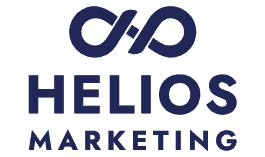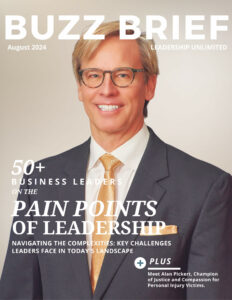Helios Marketing LLC
What is your approach to helping clients identify and solve key challenges? I start at least the first month of every engagement going through an audit of a client’s strategies, examples of what they’re doing in marketing, communications and sales today, the basic processes they should have in place (and how they’re working), and benchmarking the metrics that are going to be most important to watch over the length of our contract and beyond. The most important element is holding discovery meetings with every key staff member. I set the agenda for these sessions, record and take notes. This approach helps me understand the model and key challenges quickly.
Because the biggest hurdle most organizations face is prioritization, one of the deliverables from the audit period is a Marketing and Communications Punch List, including all tasks and initiatives I’ve identified through my research and through onboarding calls. I then identify what I consider to be primary, secondary and parking lot-level priorities, and share with the team for reference. In addition to helping us make sure we’re focusing on the most critical items and initiatives first, this approach also gives us a view into lower-lift items where we can get quicker wins while we expend effort on the longer-term initiatives.
How do you tailor your coaching or consulting style to different industries? I’ve found that marketing, communications and sales fundamentals don’t vary all that much across industries and verticals. There are absolutely nuances, but the foundational philosophies and tactics are similar enough that the work is very transferable.
The areas where industry does make a big difference are: channels/mediums, buying process and messages/stories. For these areas, it’s critical that I spend the time to dive deeply into the specifics about the industry, audience and market, as the best marketing content and creative in the world won’t land if it’s not delivered where the audience goes for information, to the people either using the product or making buying decisions or in a way that gets to the pain points and wants/needs of the people who would be most likely to buy it.
What are the most common misconceptions about consulting? The biggest misconception I’ve seen so far is that all consultants and fractional experts are overpriced and deliver templatized, high-level strategy work without executing any of it. It’s a misconception that’s based on the work from some of the bigger providers, and I can see why it’s so upsetting to business.
Most of the fractional experts I know, however, operate very differently. We are strategists by nature of our past roles and experience, but we’re also doers who can move projects and people forward in ways that even some in-house leaders can’t. In terms of price, because we’re not paid benefits, the total cost of our engagements often come in well below what an organization would pay for a full-time hire in the same role, and relative to value created, I believe organizations are often getting an incredible deal.
How do you measure the success of your client engagements?I work with my clients to benchmark the most important metrics early in the engagement so that we can review progress on a monthly basis and again when it comes to time renew or end the engagement. Beyond the data, though, I also set expectations in the beginning of each engagement about the long-term impact of the work I do in marketing strategy, brand and content. Many of these items compound over time, so while you may be seeing signs of the true impact early, the real value comes down the road.
What trends are influencing the future of consulting and coaching?The continuing trend of mass layoffs and the breakdowns in the hiring processes at many organizations are leading to many more talented people being on the market, with a percentage of them starting their own consulting and coaching businesses out of necessity. At the same time, the fractional movement is starting to take hold, with more organizations across industries and verticals trying out the model for the cost savings and agility it offers them. I’m anticipating continued growth in both the number of consultants and the number of organizations using them, as well as a point of saturation where the smaller percentage of exceptional consultants rises to the top and others struggle to find work.
What’s the most rewarding part of your work?I love being able to help the people who need it most. While many parts of my in-house career were rewarding, I was often working with bigger teams and bigger budgets, and marketing products and services that weren’t solving an important need. My clients thus far have been companies and organizations who were offering something important, and who needed helping getting to the right story, getting it in front of the right people, and convincing them to take an action. Being a part of helping them get there is incredibly fulfilling.
What skills do you think are essential for future consultants or coaches?Anything that helps consultants and coaches, especially those who are solo or very lean, pack all of the administrative and marketing and sales work into their busy schedules. Client work will always take precedence, and it’s also incredibly easy for everything else to fall by the wayside once you get reasonably busy. There are all manner of tools now to help with efficiency. What’s most important is that you don’t sacrifice what makes you special in the automation that you use.
Disclaimer: The information contained in this Business Profile, including any external links, is provided on an “as is” basis with no guarantees of completeness, accuracy, usefulness or timeliness. Daily News Network does not verify business information provided and assumes no responsibility or liability for its accuracy. Daily News Network does not endorse any business listed in this directory.


